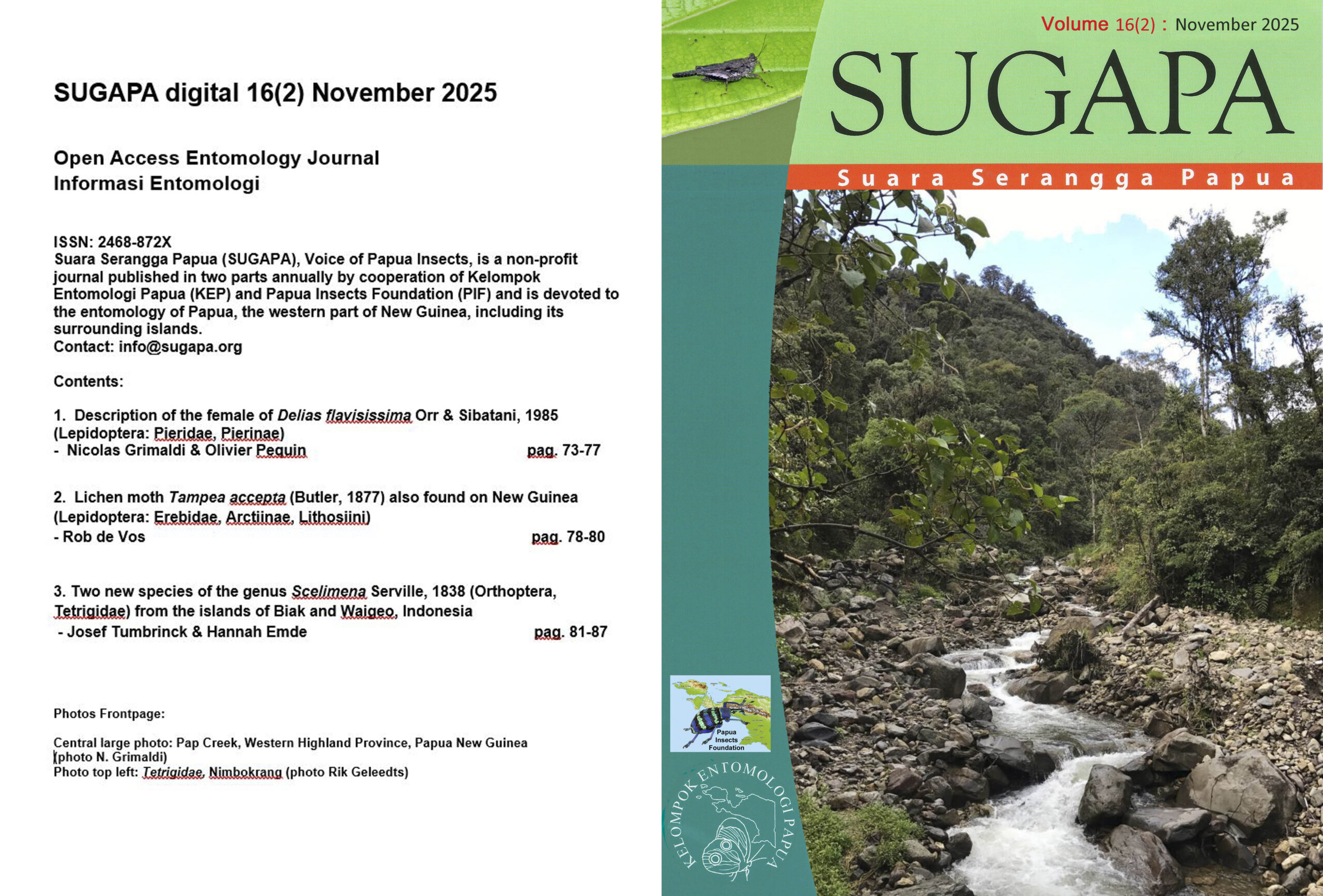Students’ Corner 4. Yarius Pakage
Eksporasi Keragaman Spesies Belalang Tongkat Ordo Phásmida di Cagar Alam Pegunungan Cydops Kabupaten Jayapura
Abstract: A survey on diversity, habitat and food plants of Phásmida in the Natural Reserveofthe Cyclops Mountains (CAPC= Cagar Alam Pegunungan Cyclops) was held during two months, from June 28 to August 29, 2008, using transect line. Technique of collecting was according to instructions ofthe Phásmida Study Project, in Switzerland. Members of four subfamilies of Phásmida were recorded: Eurycanthinae (6 species), Necrosciinae (2 species), Phasmatinae (1 species), and Platycraninae (1 species), all included in the family Phasmatidae. Within the Eurycanthinae two genera were recorded Dimorphodes and Neopromachus. In CAPC Dimorphodes is presented by D. prostastis, and Neopromachus by five species N. wallacei and four other species, unidentified till now. However, two of these -according to Mr. Kneubuhler (pers.comm.)- are probably new species. The Necrosciinae subfamily is presented by two Sosibia sp. and the Phasmatinae subfamily only by Anchiale maculata. Also the Platycraninae are represented by a single species: Graeffea striaticollis. Phásmida belong to the herbivor insects. Anchiale maculata and Sosibia eat the leaves of jambu biji; Psidium guajava and Graeffea striaticollis eat the leaves of sagu Metroxylon sagu. The habitat of Phásmida is primary and secondary forest, as many of their food plants are available there.
Download PDF:
Students corner – Yarius Pakage [SUGAPA 5(1) 2010]

 Open Access Entomology Journal
Open Access Entomology Journal


